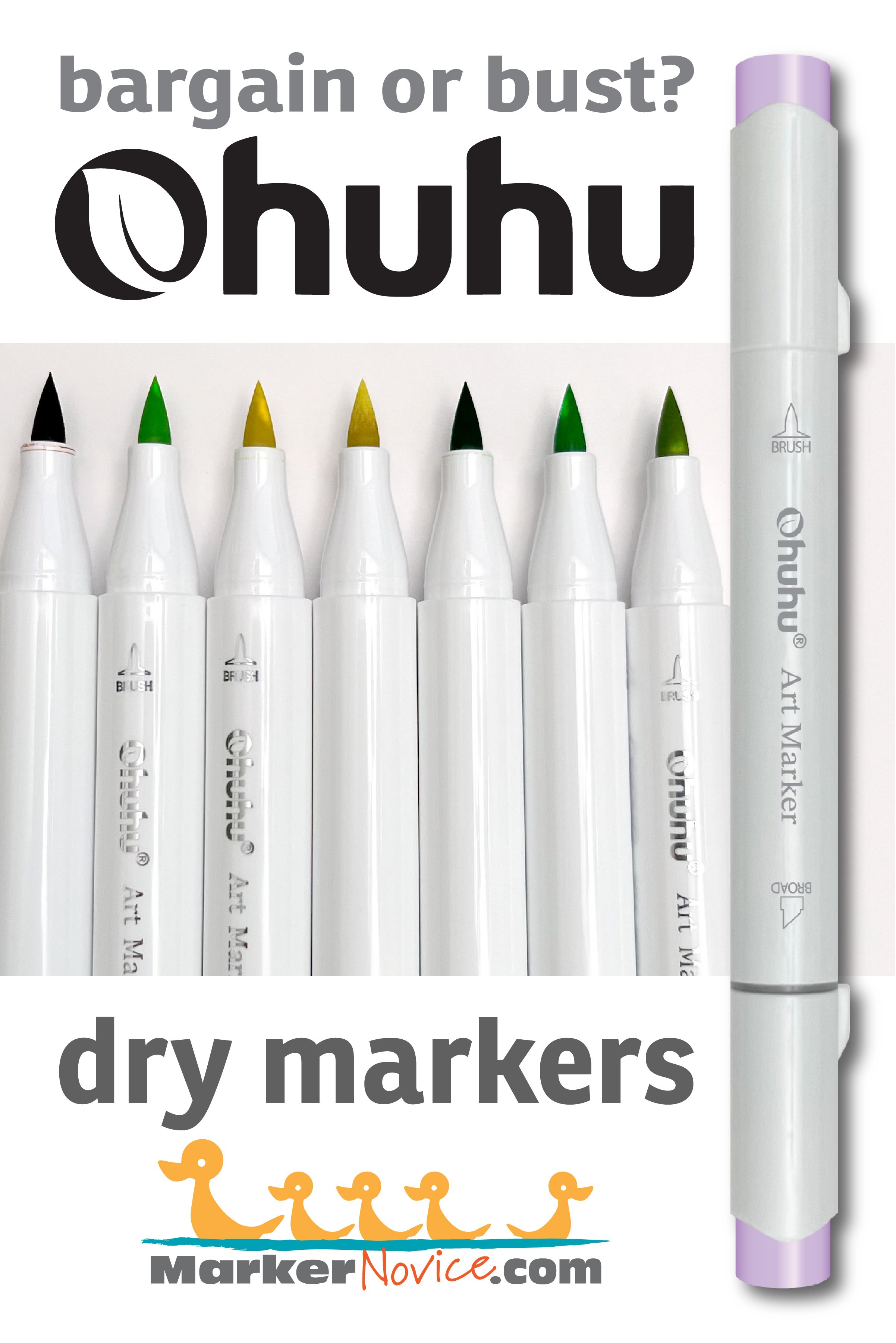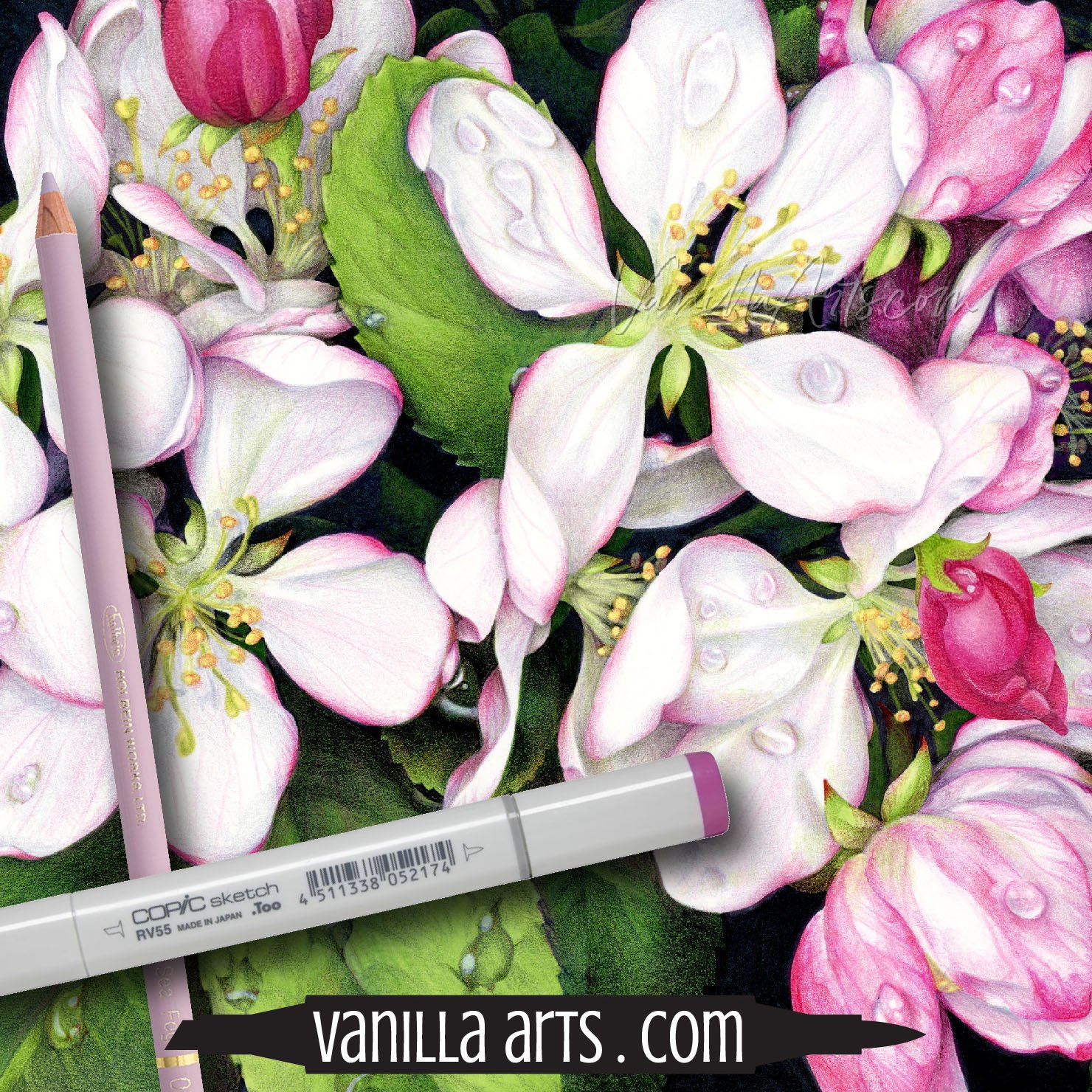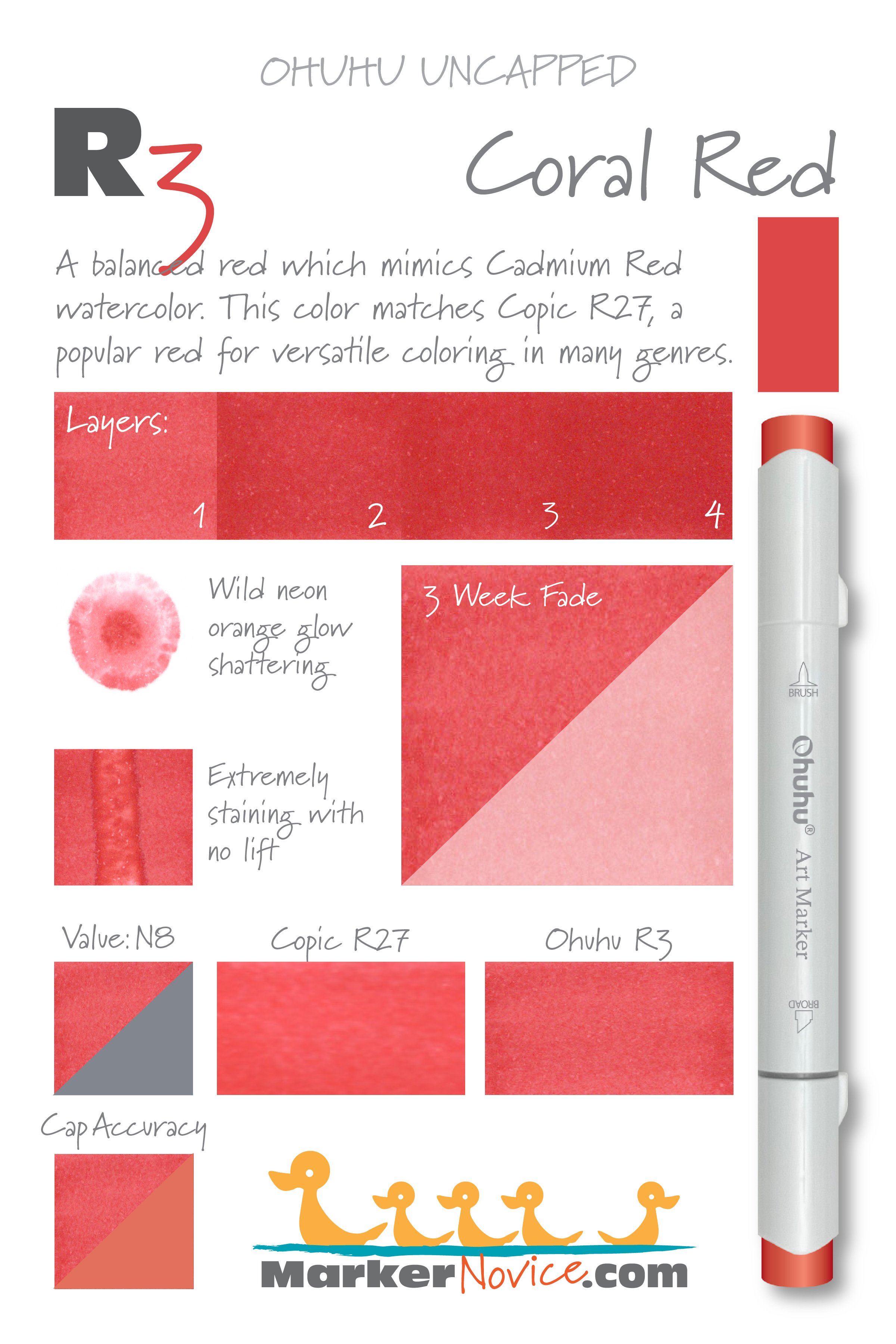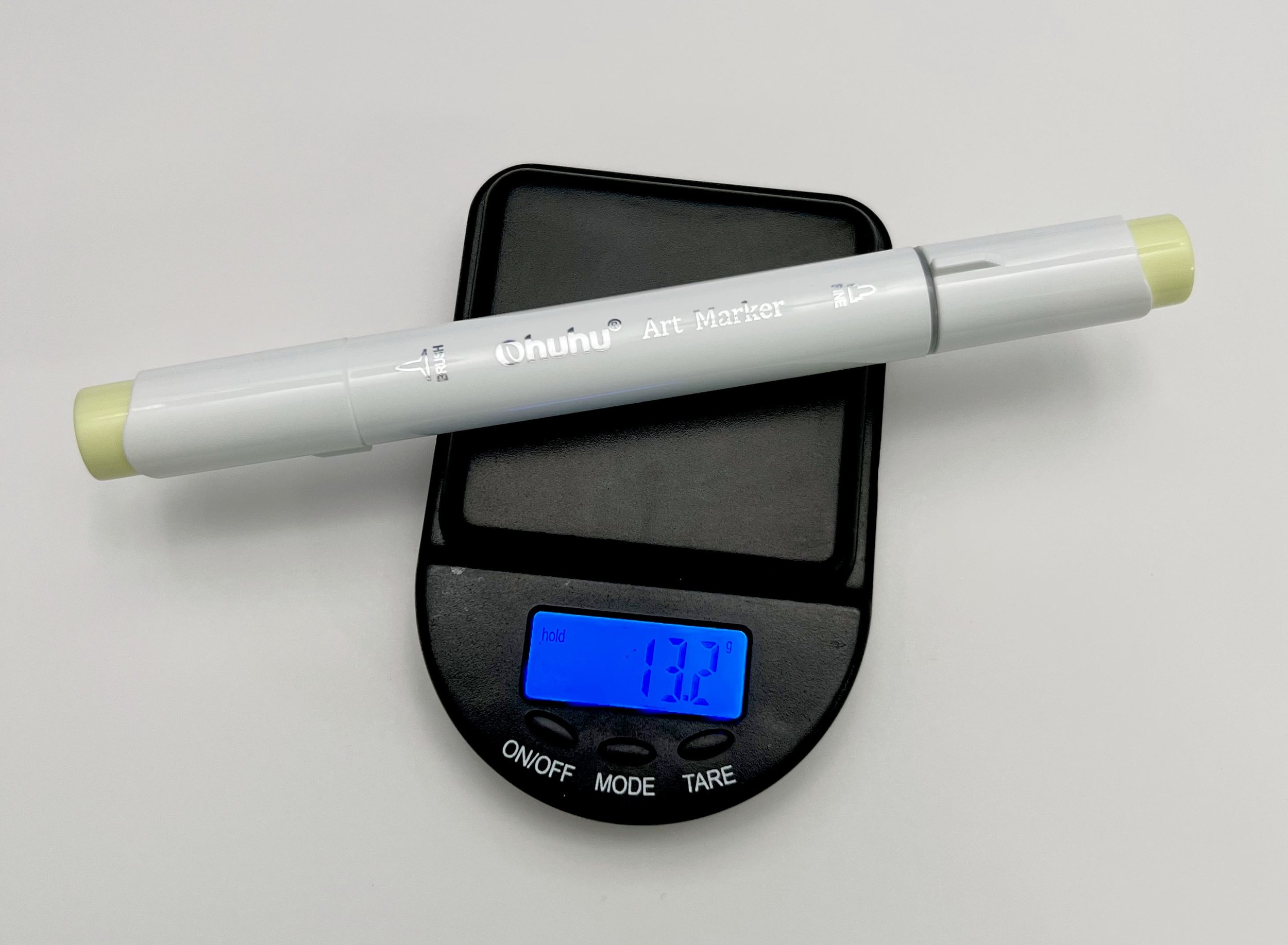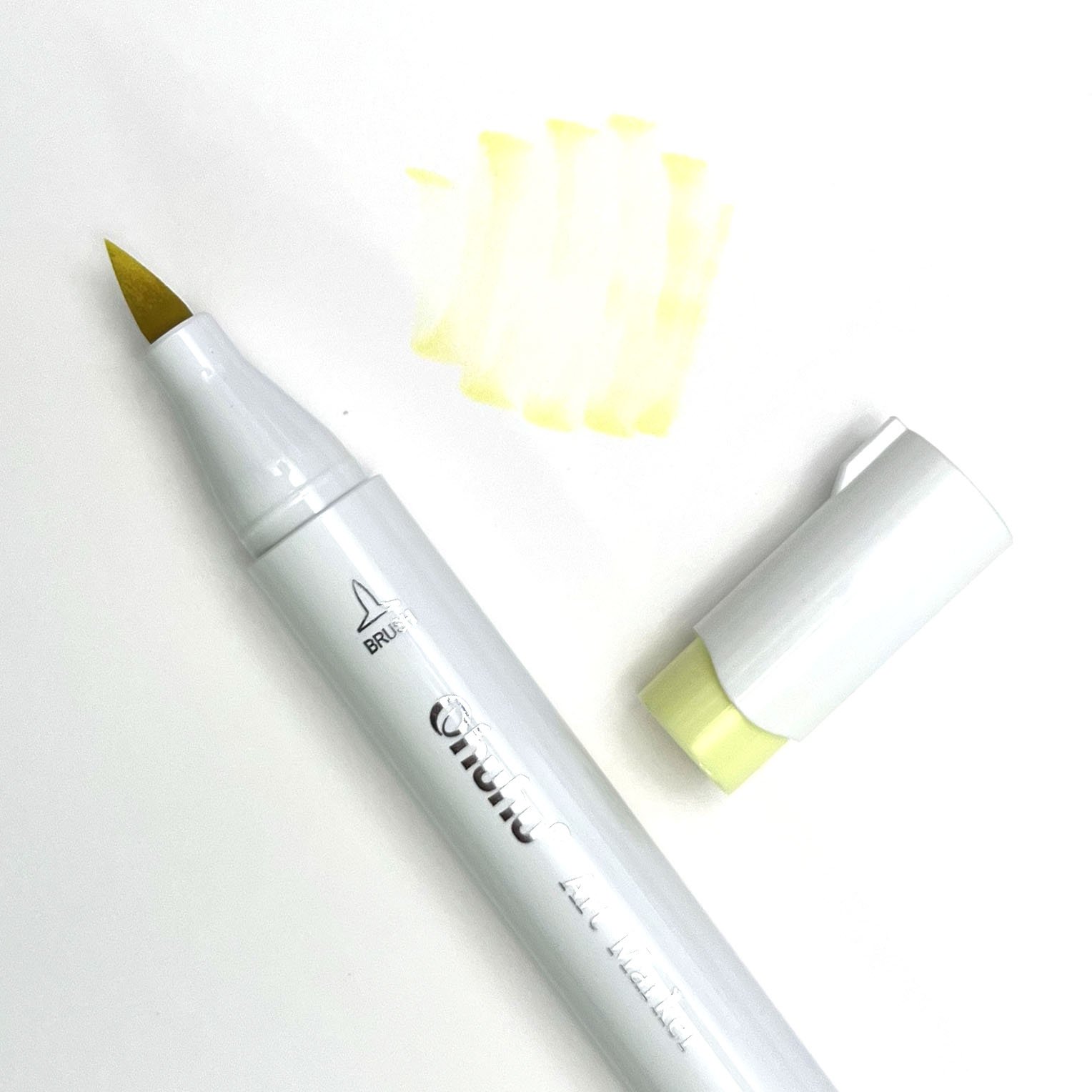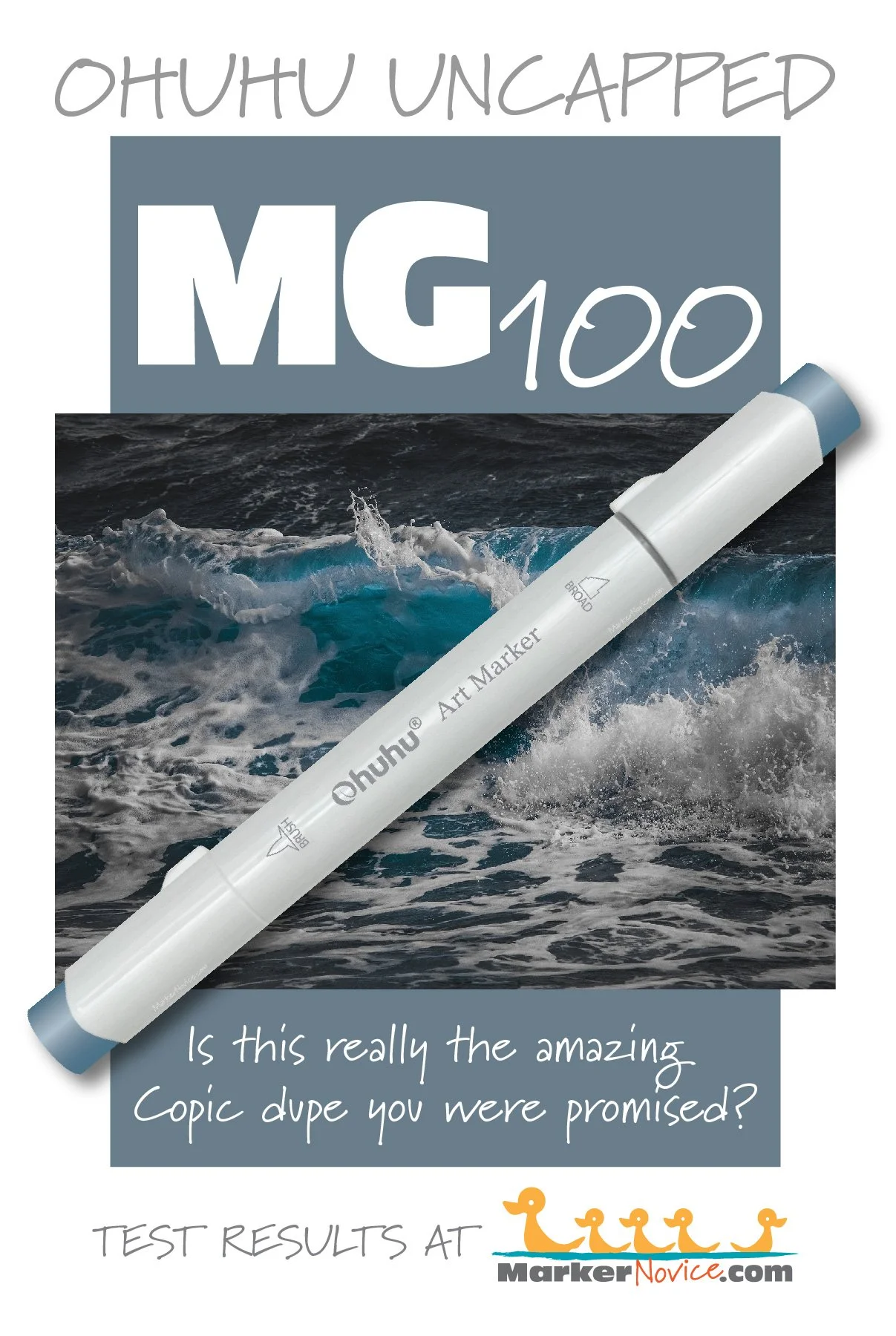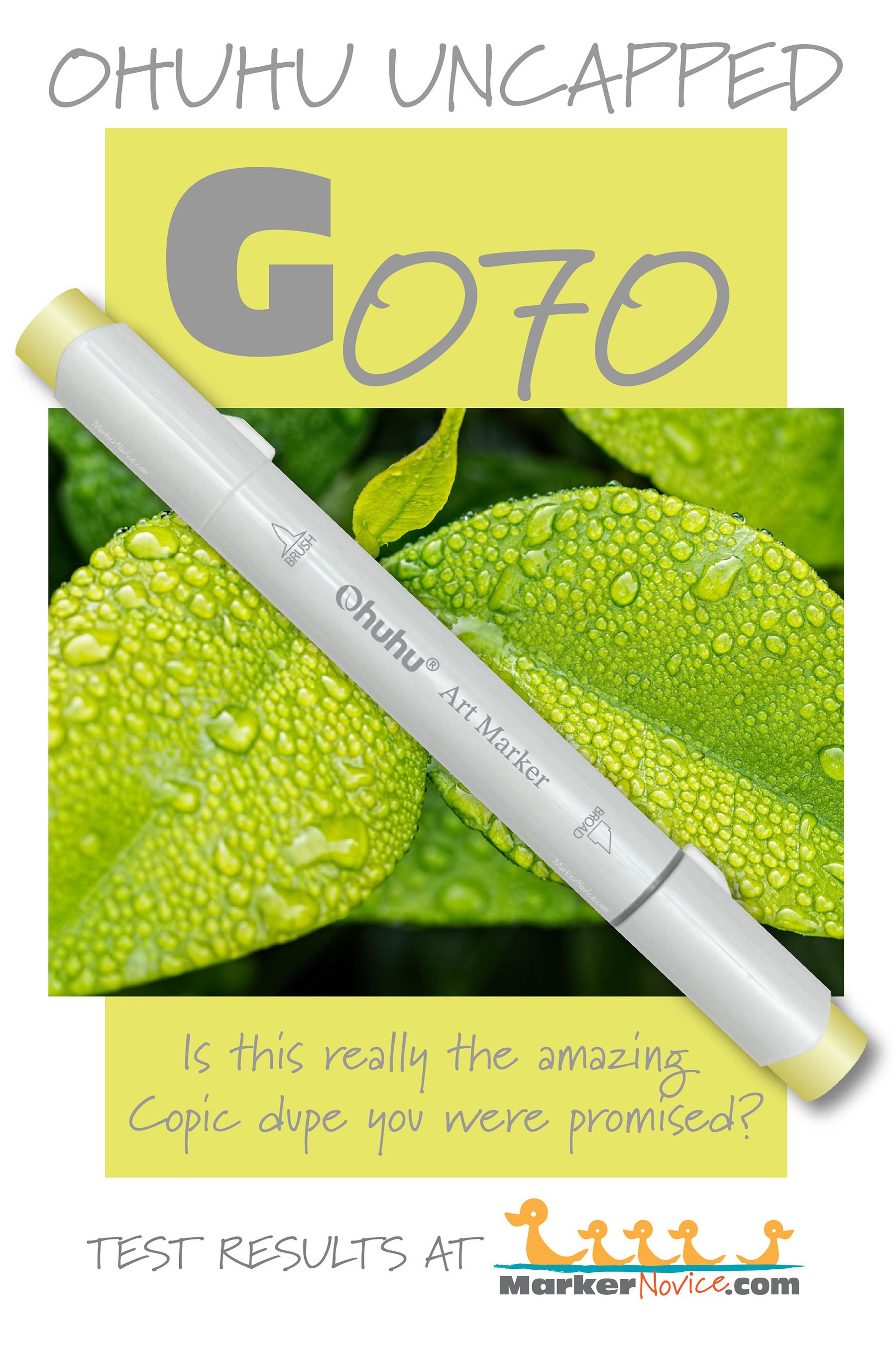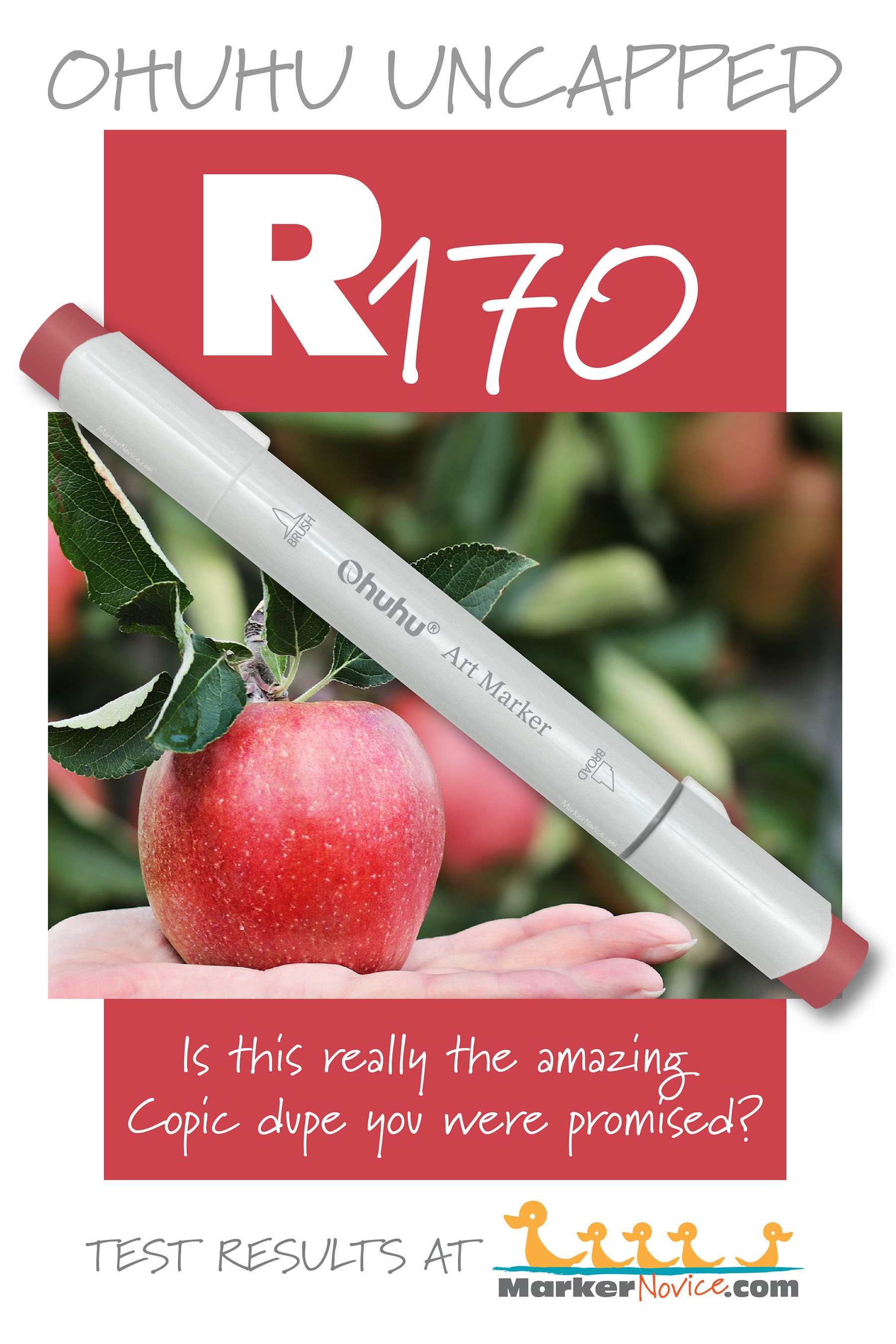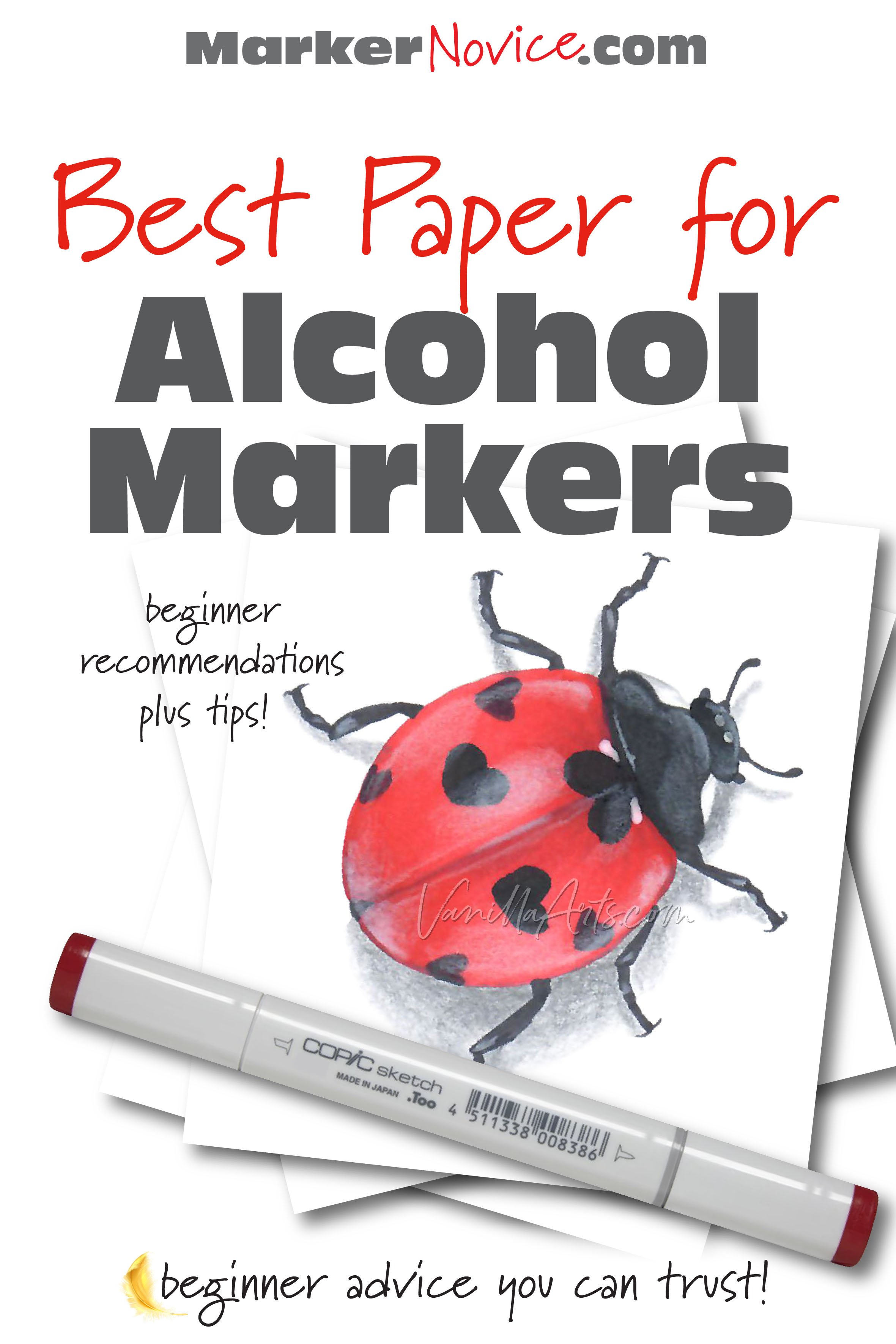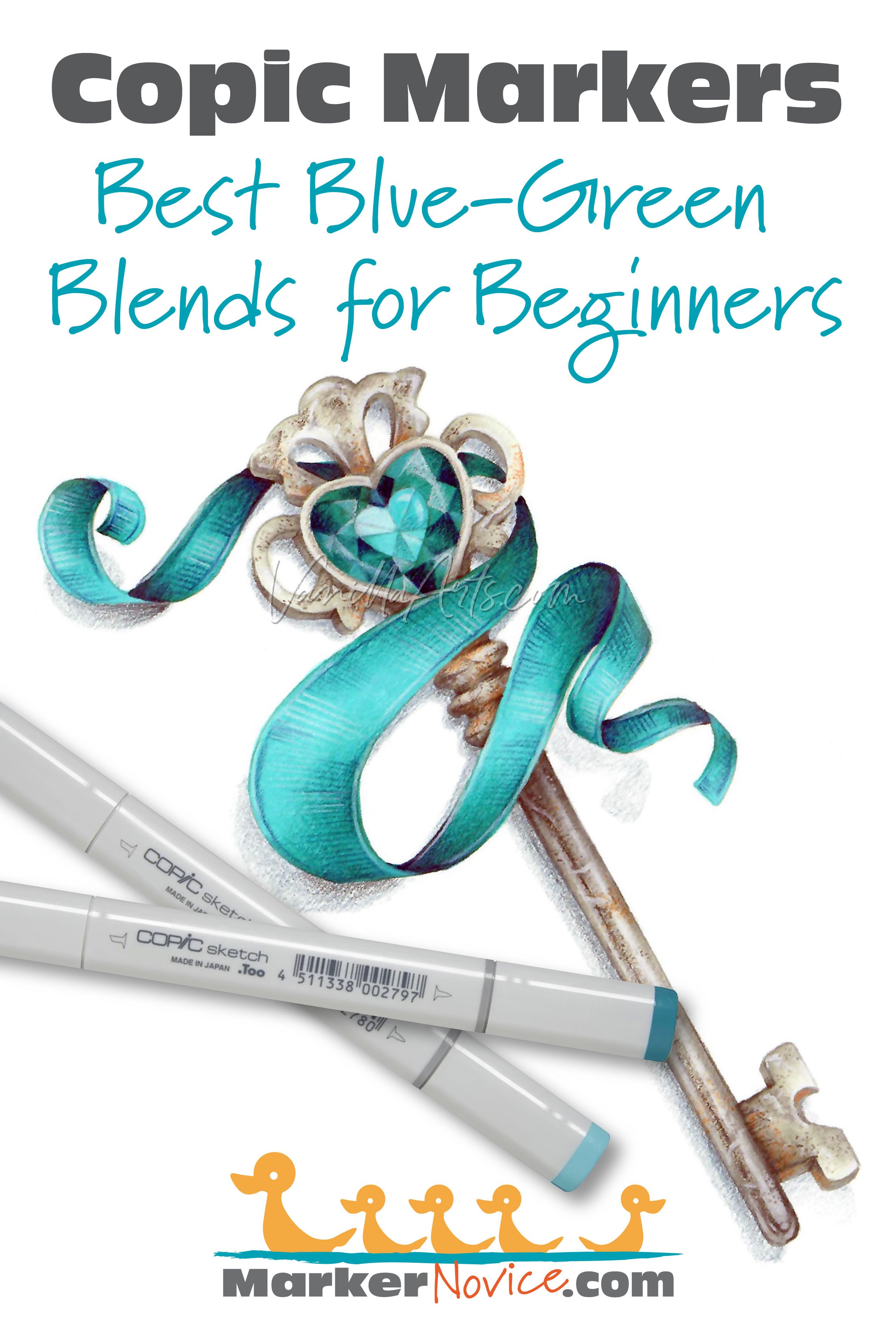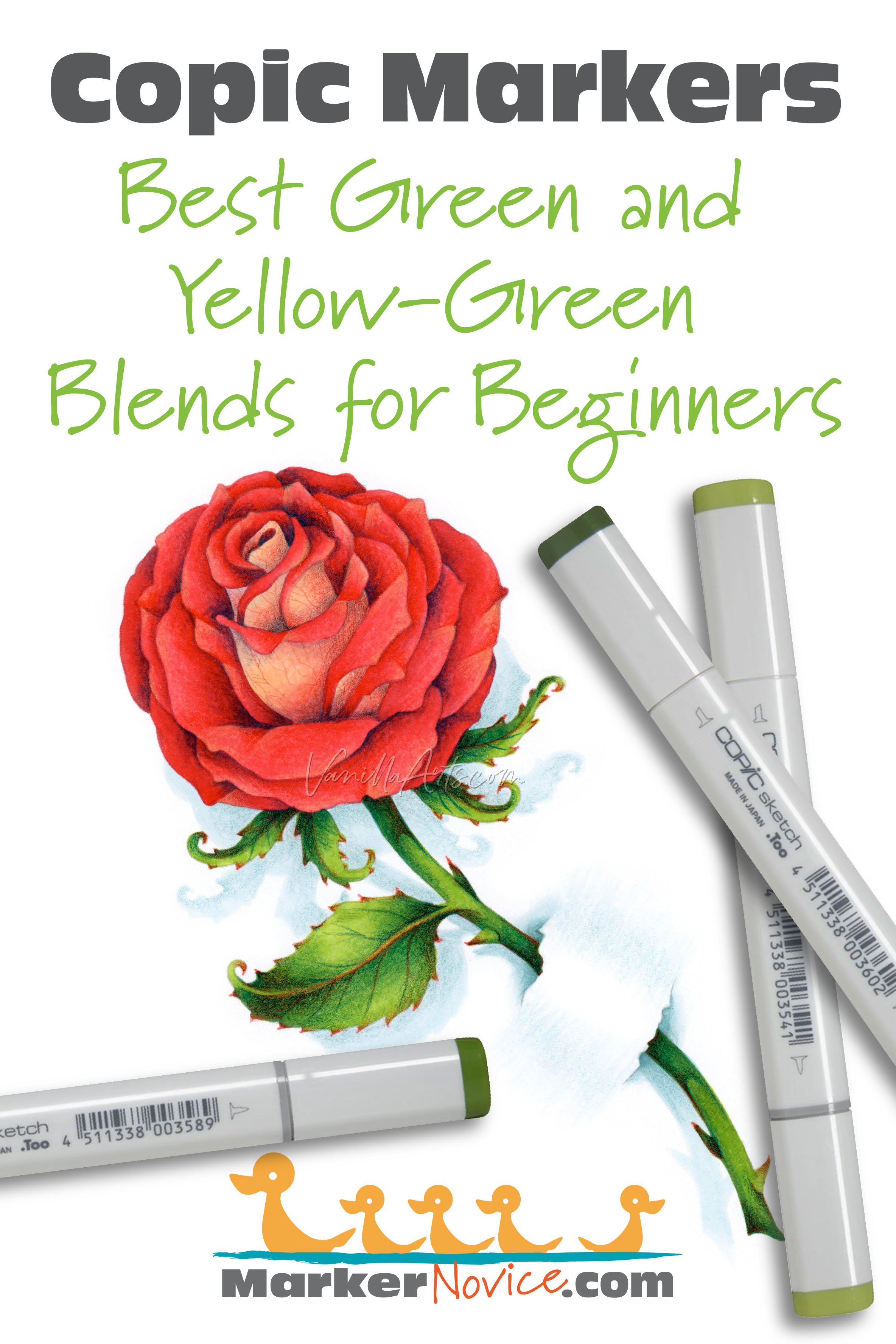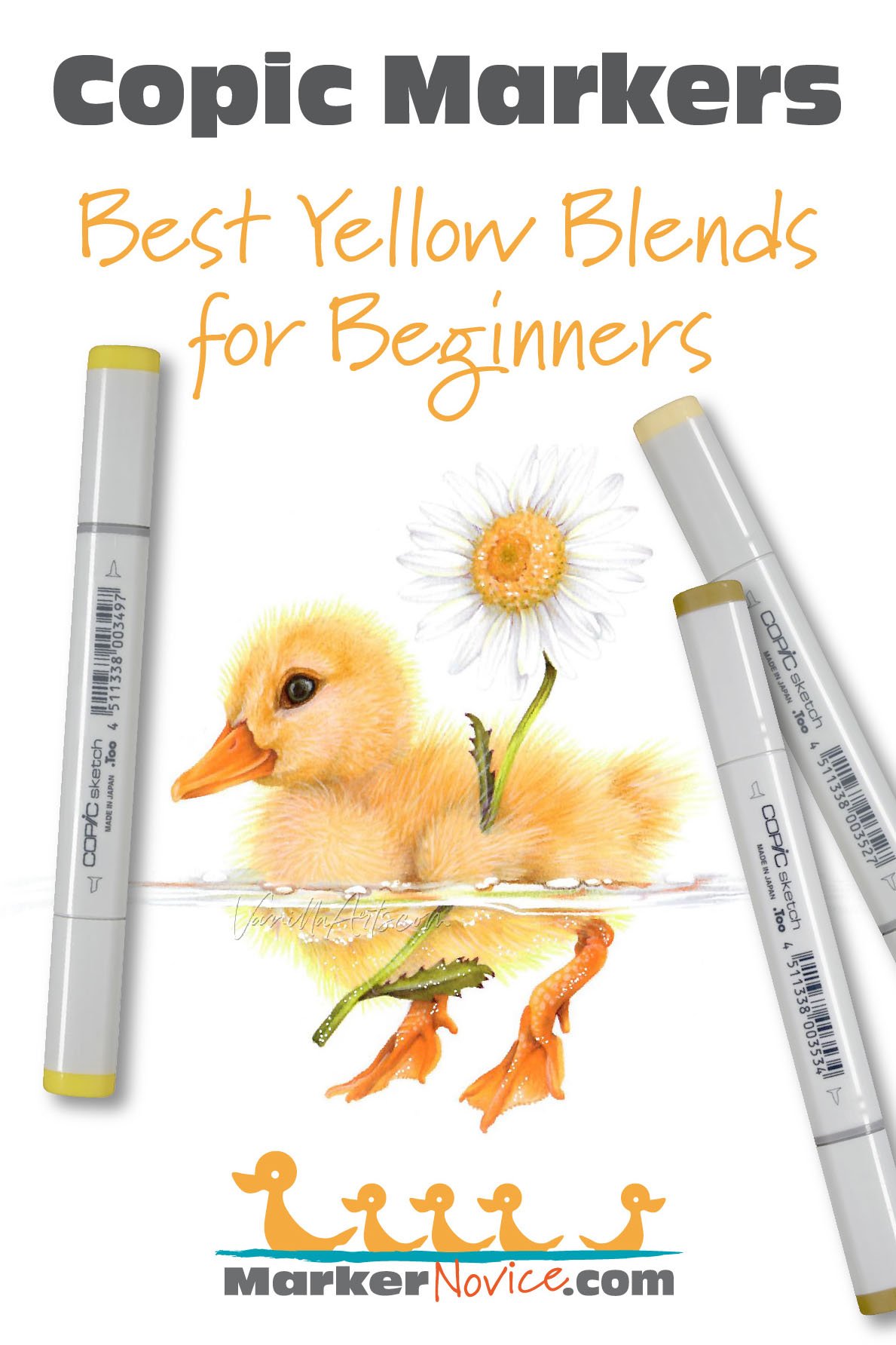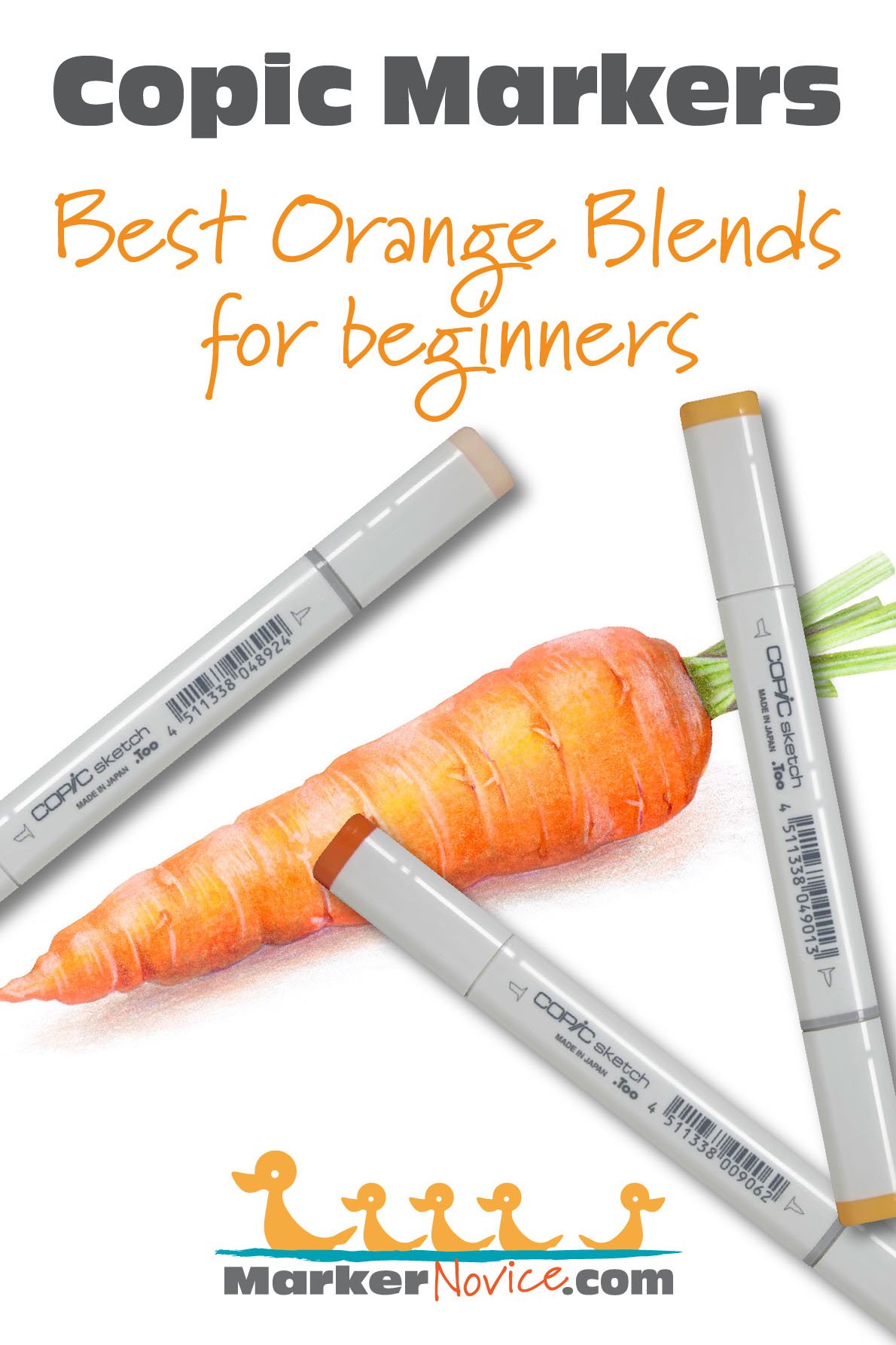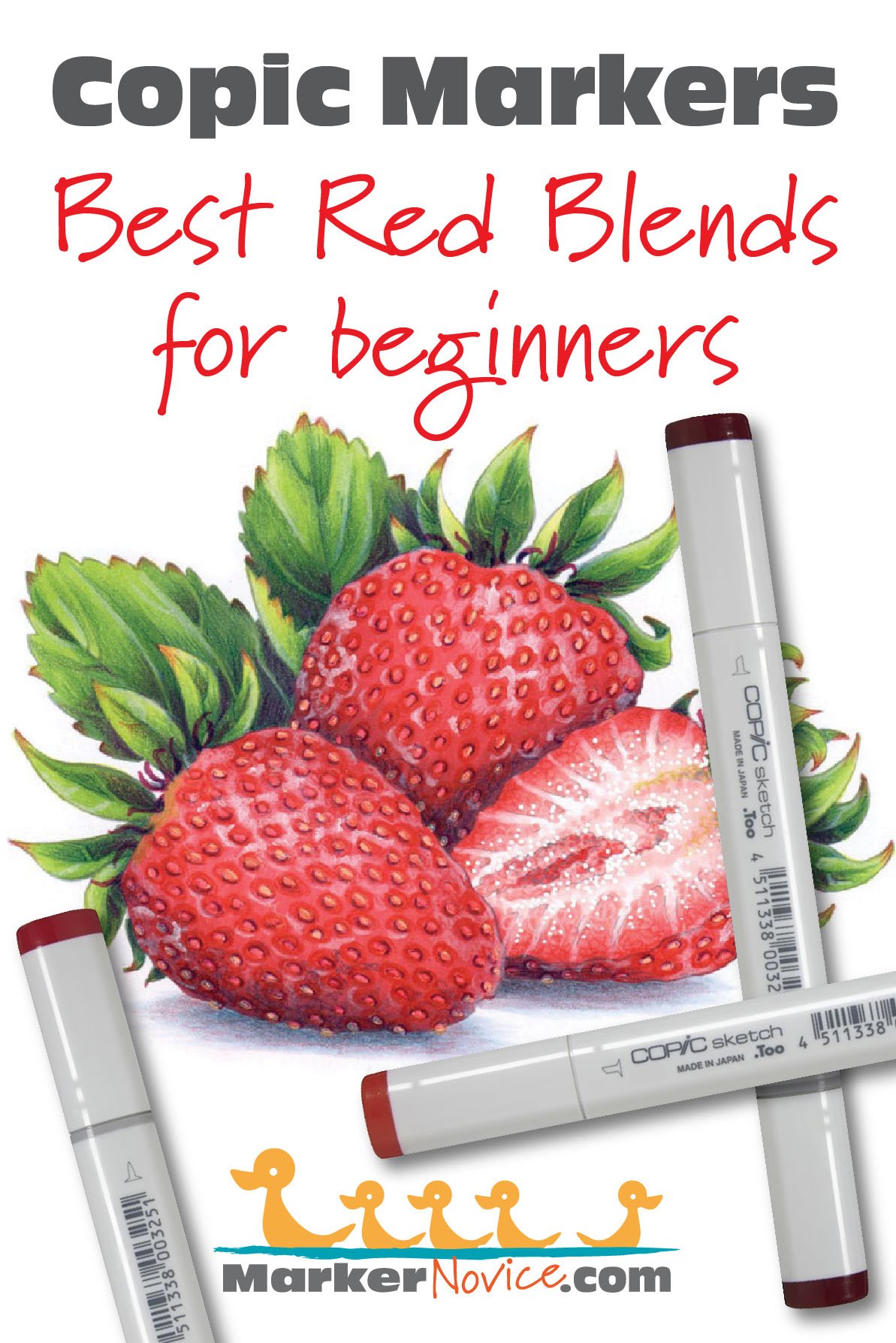Testing Ohuhu Markers
“Apple Blossom” a Copic Marker illustration by the author, Amy Shulke, 2023. 12x18 inches on Strathmore Bristol. Details with Holbein Colored Pencils. Advanced level Apple Blossom coloring kit available here.
Hey there, my name is Amy and I’m a technical illustrator and marker art instructor. I’ve worked professionally with artist grade markers since 1989. I specialize in Copic Markers.
After all the recent hype about Ohuhu Markers, I’m finally trying them.
Actually, I’m testing them. Are they really as good as Copic?
I mean real testing. I’m analyzing the Ohuhu marker body, the nibs, and testing the ink for lightfastness, color chemistry, staining, lift, and cap accuracy.
You know, the stuff marker artists should care about?
In this series of articles, I’m sharing the good, the bad, and the really, really ugly. Honest observations from a professional marker artist who isn’t paid to review Ohuhu and isn’t trying to sell you markers.
Today, let’s cover the dry and dying markers I received in my new set of Ohuhu Markers
DRY OHUHU MARKERS?
FULL DISCLOSURE: I didn’t open my Ohuhu package immediately when it arrived; then it took a couple of weeks of swatching for lightfast testing before I found the dry markers.
To be honest, I don’t weigh my markers on arrival. Who does?
In any case, I missed the 30 day exchange window so I can’t tell you how effective their customer service is. More on this subject below.
I am not sponsored by Ohuhu or any other art supply company. I do not accept free art supplies either. Every product shown on MarkerNovice.com and VanillaArts.com has been purchased by me with my own funds.
Are Ohuhu Markers a money saver or a budget buster?
Now that I have all 320 Honolulu colors, I’m testing every marker the same way I’ve been testing Copic Markers.
lightfastness
color chemistry
value
reactiveness
staining
lift
cap accuracy.
dry or Under-weight Ohuhu Markers in a brand new set?
I’ll be honest, I’m biased.
I expected Ohuhu to look and behave like a low-quality alcohol marker but I didn’t count on buying dead markers.
In my set of 320 Ohuhu Honolulu markers, seven markers arrived dead or dying.
I was about 2/3 of the way though swatching the entire set before I found the first dead marker. At that point, I started weighing each before swatching.
I still need to circle back to to the beginning to weigh the first two hundred markers. I won’t have an accurate under-weight marker count until I do.
How Low Are the Dying Ohuhu Markers?
The seven markers are all well under the average weight of a full Ohuhu marker. There are no visible cracks and all caps were secure when I discovered the dry markers.
Ohuhu G030 Crescent Yellow on the scale. The full Ohuhu Markers in my new set average about 16.2 grams. This dead marker weighs 3 grams short and both nibs are pale and hard.
Full Honolulu “Brush/Fine” Markers (with both caps on) are averaging about 16.2 grams, give or take a tenth.
Note: I can’t confirm this average until I weigh all 320 markers.
In my new set:
2 dead Ohuhu weighed 12.9 and 13.2 grams
The under-weight Ohuhu weighed between 13.7 - 14.4 grams
For clarification, I consider a marker “dead” when the marker barely leaves a mark on the paper and when one or both nibs are hard and crunchy.
A dying marker is too low on ink to leave a consistent mark. The nibs may have whitened dry spots or even darkened sticky areas where the nib can’t draw enough ink from the marker core to stay fully moist.
One interesting point:
My dead/dying colors included only one dark marker (E080).
The remaining six are all light yellow, light yellow greens, and light greens. Two of them are numbered “030” which is an interesting coincidence.
Most art supply companies produce colors in batches— for instance, one month they make all blues, the next month they switch to red. It’s not a stretch to wonder if there was an issue at the factory during Ohuhu’s pale yellowish green batches.
Customer Service: Ohuhu’s return policy
Read Ohuhu’s return/exchange policy page very carefully. It seems designed to make returns difficult. This is one reason I decided to order through Amazon rather than directly from Ohuhu.
I live in a rural area. I can return to Amazon from several local businesses but the nearest Fed Ex or UPS is an hour away.
As I stated above, I missed the 30 day return window because my package sat unopened for a couple weeks and then it took a while to swatch the whole set. The bad markers were concentrated on the far right and I started swatching from the left.
But also, I was hesitant to contact Ohuhu. I’m testing their markers and was already seeing things I don’t like. I didn’t want obligate Ohuhu to send free replacements for an unfavorable review.
Why not purchase refills for the dying Ohuhu Markers?
I purchased seven new Ohuhu Markers to replace the seven dead/dying colors.
Why didn’t I just purchase refills and fix the markers?
It’s not as easy as you think.
First, Ohuhu claims their markers are refillable but that’s misleading.
Ohuhu makes 320+ colors but they only sell 50 refills.
Of the seven dead & dying, only one marker has a corresponding refill.
There’s also a nib issue. The nibs on both ends of all seven markers are damaged beyond repair.
Ohuhu only sells replacement brush nibs. Ohuhu does not sell replacement chisel or fine nibs.
So the best I can do is replace the brush ends but my fine ends are just dead forever? No thanks.
An under-weight, dying Ohuhu Y030 Lemon Chiffon. This dry marker is new, directly out of the package.
Here’s the last problem:
Contrary to popular myth, you can not fix a dead marker by simply refilling it.
Refills are for markers that running slightly low.
Refills can not raise the dead.
Most people think of a marker like a car with a gas tank. When it runs down to empty, just add more juice and you’re good to go.
But alcohol markers don’t work that way.
Inside every Ohuhu and Copic is a soft and spongey core. The core keeps the ink from sloshing around inside. The core also feeds ink to the nibs on both ends.
Ohuhu and Copic inks contain shellac. Shellac is a fixative; it hardens and cures as it dries, preventing color transfer or smearing after your coloring has dried.
When a marker dries-out below a minimum weight, in the absence of ink, the soft core cures and hardens. A crusty core can not hold ink.
Note: This is why ink sometimes pours out the other end as you refill a marker, the damaged core can’t absorb new ink.
My dead Ohuhu can not be saved. They’re toast.
My dying Ohuhu are close enough in weight to the dead markers that their cores are certainly toast too.
Besides, there’s a fatal flaw with the resurrection theory:
Even if you could revive a dead marker with refill ink, the color of the marker would be darker than normal.
The alcohol (solvent) in the marker evaporates, the dye doesn’t. Adding fresh ink adds more moisture AND more dye. To keep an R13 marker the true color of R13, you should add straight solvent, not more dye!
But it doesn’t work anyway. No sense wishing and wasting refill ink.
Refills won’t help my markers, even if Ohuhu did sell ink for them.
But Copic has issues too!
I hear ya!
I’m not making excuses for Copic— they’ve had problems with marker cracks and shipping dead markers for the last several years.
I hear about it from a lot of students.
But I’m not reviewing Copic markers today. We’re talkin’ Ohuhu here.
I’ve read a lot of dead Copic rants on Facebook, Quora, and Reddit. People are mad at Copic so they’re buying Ohuhu instead.
Which seems dumb. You’re mad at the good markers so you’re gonna suffer with the bad in protest?
My set of Ohuhu had similar quality issues to what I’m hearing from those buying Copics made in the last couple years. At least with a dried-out Copic, there’s usually a crack in the body or cap you can point to. With my Ohuhu I don’t see anything wrong with them, other than the fact that they feel comically lightweight.
I’m not saying it’s okay to sell people dry markers,
I’m pointing out that Ohuhu has similar problems to Copic.
Neither company is an angel here.
Oh, and by the way:
I’m missing one color from my Ohuhu set
In the swatching process, I found two WG3 markers.
But I’ve got 320 markers which means I’m missing a color.
And it’ll be a total PITA to figure out which one because Ohuhu’s numbers are a joke.
Ohuhu Honolulu Markers 320 Set purchased by the author in May 2023.

